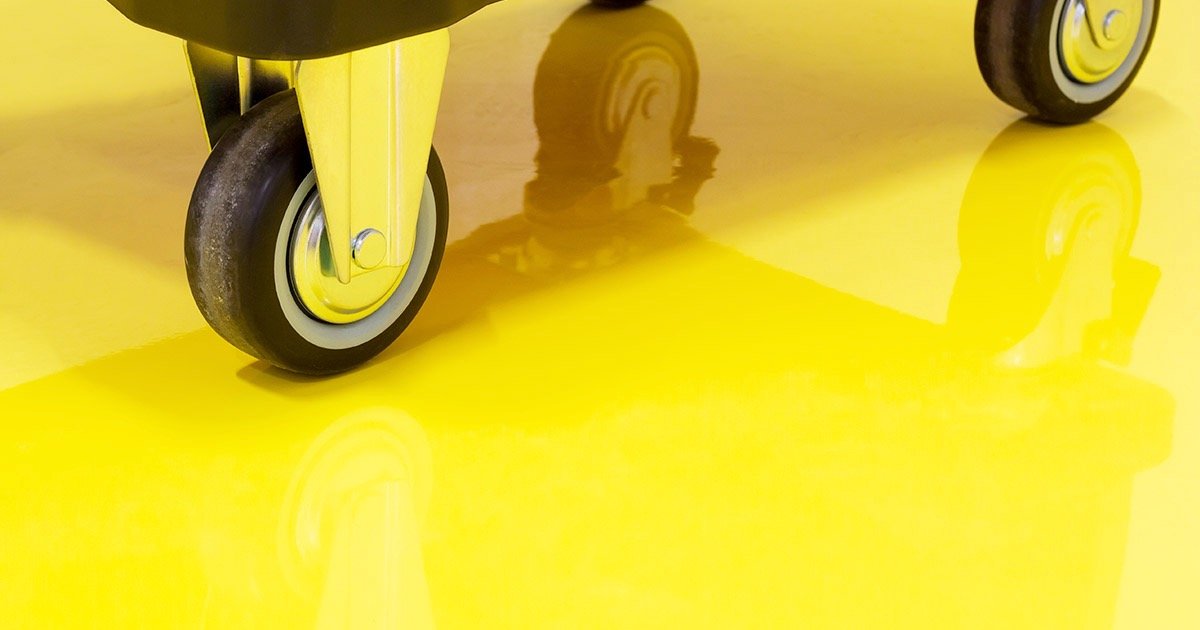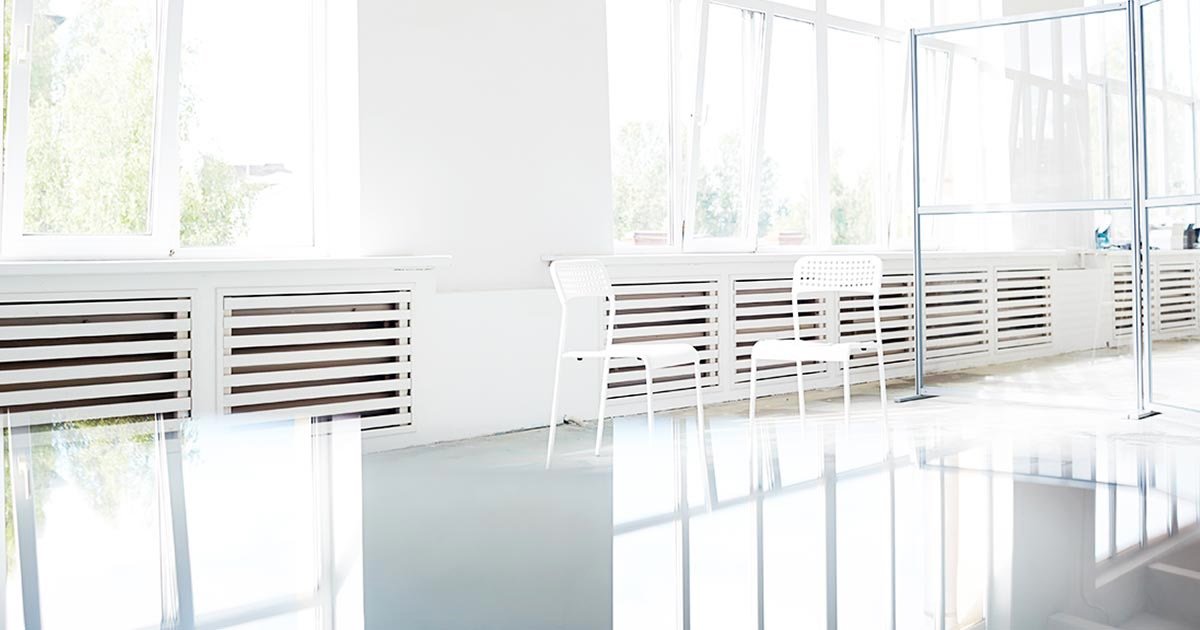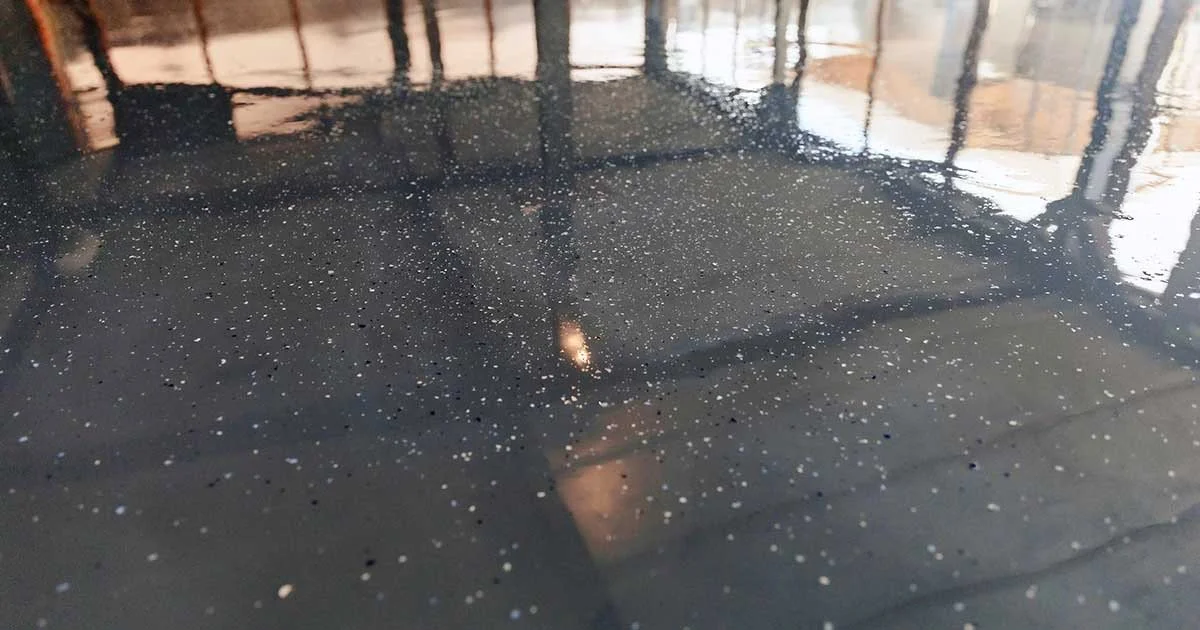The Lifespan Of Epoxy Floors: What To Expect
When embarking on a home renovation or considering flooring options for a new commercial space, epoxy floors have likely crossed your radar. Renowned for their sleek appearance, robust durability and impressive resistance to spills, they've become a popular choice in many Australian households and businesses. But beyond the immediate appeal, there's an essential question that many prospective owners grapple with: "How long will these epoxy floors last for?"
Understanding the lifespan of epoxy flooring is crucial. Not only does it offer insights into the long-term value for money, but it also guides expectations regarding maintenance and potential refurbishments. Discover what influences the longevity of epoxy floors and what you can anticipate over the years.
Factors Affecting The Lifespan of Epoxy Floors
Epoxy floors are incredibly resilient, but like all flooring options, their lifespan can be influenced by a range of factors. To make an informed decision and ensure you get the most out of your investment, it's essential to understand these factors and how they might impact the longevity of your floor.
Quality Of Materials
Not all epoxy is created equal. Premium quality epoxy formulations are designed to be more resilient, offering enhanced protection against wear and tear. These high-grade materials often come with a heftier price tag but offer a longer lifespan and better overall value. On the flip side, lower quality epoxies might save you a few dollars initially, but they can wear out quicker, leading to earlier refurbishments or replacements.
Pro Tip: Don’t skimp on layers when applying your epoxy floor. The thicker the epoxy application the more durable it is.
Installation Process
While there might be a temptation to take a DIY approach or opt for cheaper installation services, it can be a false economy. Professional installation ensures that the epoxy bonds properly to the substrate, reducing the risks of peeling or cracking. Proper preparation of the floor surface and meticulous application are paramount to maximising the lifespan of epoxy floors.
Pro Tip: Do not miss the prep stage. This is typically one of the hardest and most time consuming elements when doing an epoxy floor. This is the one area which can make or break the quality and life of your floor.
Environmental Conditions
Australia's diverse climate, ranging from tropical to temperate zones, can play a significant role in the lifespan of epoxy floors. Prolonged exposure to high temperatures, humidity and UV rays can potentially cause discolouration or degradation of the epoxy. Especially in sunnier regions, opting for UV-resistant formulations can be a game-changer.
Usage And Traffic
The amount and type of traffic your floor endures will undeniably influence its lifespan. Residential areas with light foot traffic will naturally see less wear compared to a busy commercial space or garage with vehicular movement. Additionally, spaces like workshops, where heavy machinery is used, can introduce additional stress to the epoxy, potentially shortening its lifespan.
Maintenance Practices
Regular and appropriate maintenance not only keeps your epoxy floor looking spick and span but also significantly extends its life. Simple practices like timely cleaning of spills, avoiding abrasive scrubbing and using gentle cleaners can maintain the floor's lustre and integrity for many years.
Typical Lifespan Expectations
Epoxy floors have earned a reputation for durability, but their lifespan can vary depending on their setting and the specific conditions they endure. Let's break down what you can typically expect in different environments:
Residential Settings
In Australian homes, where the floor isn't subjected to heavy-duty wear and tear, epoxy flooring can remain in top-notch condition for a considerable duration.
“On average, homeowners can expect a well-maintained epoxy floor to last anywhere from 15 to 25 years.”
Factors such as the quality of installation, the grade of materials used and regular maintenance play a pivotal role in achieving the upper end of this range.
Commercial Settings
Commercial or industrial environments present a different story. These settings often involve greater foot traffic, frequent movement of goods and sometimes exposure to chemicals or industrial processes. Due to these rigorous conditions, epoxy floors in commercial spaces may have a shorter lifespan, ranging from 10 to 15 years. However, with high-grade materials and diligent maintenance, many businesses manage to push the boundaries and enjoy their epoxy flooring for longer durations.
Garages And Workshops
These spaces are unique in their own right. Subjected to vehicular traffic, potential oil spills, heavy equipment and sometimes extreme temperature fluctuations, the demands on epoxy floors in garages and workshops are intense. While the tough nature of epoxy can withstand these challenges, its lifespan in such environments can be slightly reduced, often ranging from 10 to 20 years. The variance is largely influenced by the specific conditions of each garage or workshop and the care taken to maintain the flooring.
Note: Depending on the level of maintenance you have for your floors, we typically see the following lifespans based on the application type:
|
|
Maintained |
Not Maintained |
|
Residential Flooring |
15 – 25 years |
5 - 15 years |
|
Commercial Flooring |
10 – 15 years |
5 – 10 years |
|
Garages & Workshops |
10 – 20 years |
5 – 10 years |
Signs That Your Epoxy Floor Needs Replacement Or Refurbishment
Epoxy floors are tough, but like any other flooring material, they can show signs of age or wear over time. Recognising these signs early can help you address them promptly, potentially prolonging the floor's lifespan or ensuring a timely replacement. Here's what to look out for:
Visible Wear And Tear
With the passage of time, sections of your epoxy floor, especially those subjected to high foot traffic or heavy loads, can begin to show signs of distress. Cracks, which might appear as thin hairline fissures initially, can widen over time. Peeling, where the epoxy layer starts to lift or bubble up, is another tell-tale sign. Both are indications that the integrity of the epoxy is compromised and requires attention.
Discolouration
A common issue with epoxy floors, particularly in sunlit areas, is discoloration. Over prolonged exposure, the once vibrant and glossy appearance can dull or take on a yellowish hue. Similarly, certain chemicals, if spilled and not cleaned promptly, can stain or alter the floor's colour. While some discoloration can be superficial, drastic changes in colour might indicate deeper damage.
Surface Damage
Despite their resilience, epoxy floors aren't immune to physical damage. Dents from heavy objects being dropped, scratches from sharp items being dragged, or chipping from high-impact events can mar the surface. While minor damage can often be refurbished, extensive surface injuries might call for larger scale repairs or replacement.
Adhesion Issues
One of the foundational requirements for a long-lasting epoxy floor is its adhesion to the substrate. If the bond between the epoxy and the underlying floor is weakened or compromised, you might notice the epoxy lifting or creating pockets of air beneath. This can happen due to moisture issues, improper installation, or the natural ageing of the material. Addressing adhesion problems early is crucial, as they can rapidly escalate and affect larger sections of the floor.
Extending The Lifespan of Your Epoxy Floor
While epoxy floors boast impressive durability, their lifespan can be considerably extended with some mindful practices. By taking proactive steps, homeowners and business proprietors can ensure that their flooring remains in prime condition for years to come.
Routine Maintenance:
Cleaning: Regular cleaning is a must. For daily upkeep, a soft broom or a dust mop is ideal for removing dirt and dust. For deeper cleaning, using a pH-neutral cleaner with a soft mop can keep the floor gleaming without harming the epoxy.
Spill Management: Addressing spills promptly is crucial, especially if they're of a corrosive nature. Simple household spills can be wiped up with a cloth, while chemical spills might require neutralising agents.
Avoid Abrasives: Steel wool or other abrasive pads can scratch the epoxy surface. It's best to avoid them in favour of soft cloths or mops.
Protective Measures:
Furniture Pads: Heavy furniture can exert undue stress on the epoxy floor. Using protective pads under legs or bases can prevent dents and scratches.
Mats: In high-traffic areas or entrances, placing mats can reduce the wear on the epoxy, capturing dirt and grit that might otherwise scratch the surface.
Mindful Movement: Dragging sharp or heavy objects can be detrimental. If movement is necessary, lift items or use protective barriers beneath them to avoid direct contact with the floor.
Periodic Checks:
Establish a routine, perhaps every few months, to inspect the floor closely. Look out for early signs of wear, peeling, or cracks. Addressing these minor issues promptly can prevent them from escalating into more significant problems, potentially saving time and money in the long run.
How Long Does An Epoxy Floor Truly Last For?
Epoxy flooring has become an increasingly popular choice among Australians for its sleek aesthetics, robust durability and remarkable resistance to various factors. When it comes to identifying the overall lifespan of an epoxy floor the main influencing factors range from the quality of materials used, the environmental conditions, the usage patterns right through to maintenance practices.
Understanding the typical lifespan expectations for different settings – be it residential, commercial, or spaces like garages and workshops – is fundamental. By recognising early signs of wear and implementing protective and maintenance measures, one can significantly extend the life and beauty of their epoxy floor.
Investing in epoxy flooring is not just about the immediate visual appeal; it's also about ensuring longevity, functionality and value for money over the years. Making informed choices, being proactive with maintenance and seeking professional guidance can make all the difference.
If you're contemplating epoxy flooring for your space or seeking more insights, our team is here to assist. With a wealth of experience in providing top-notch epoxy flooring solutions, we ensure durability, aesthetics and expert advice. Get in touch with us today to learn more or to discuss our professional epoxy flooring services.






